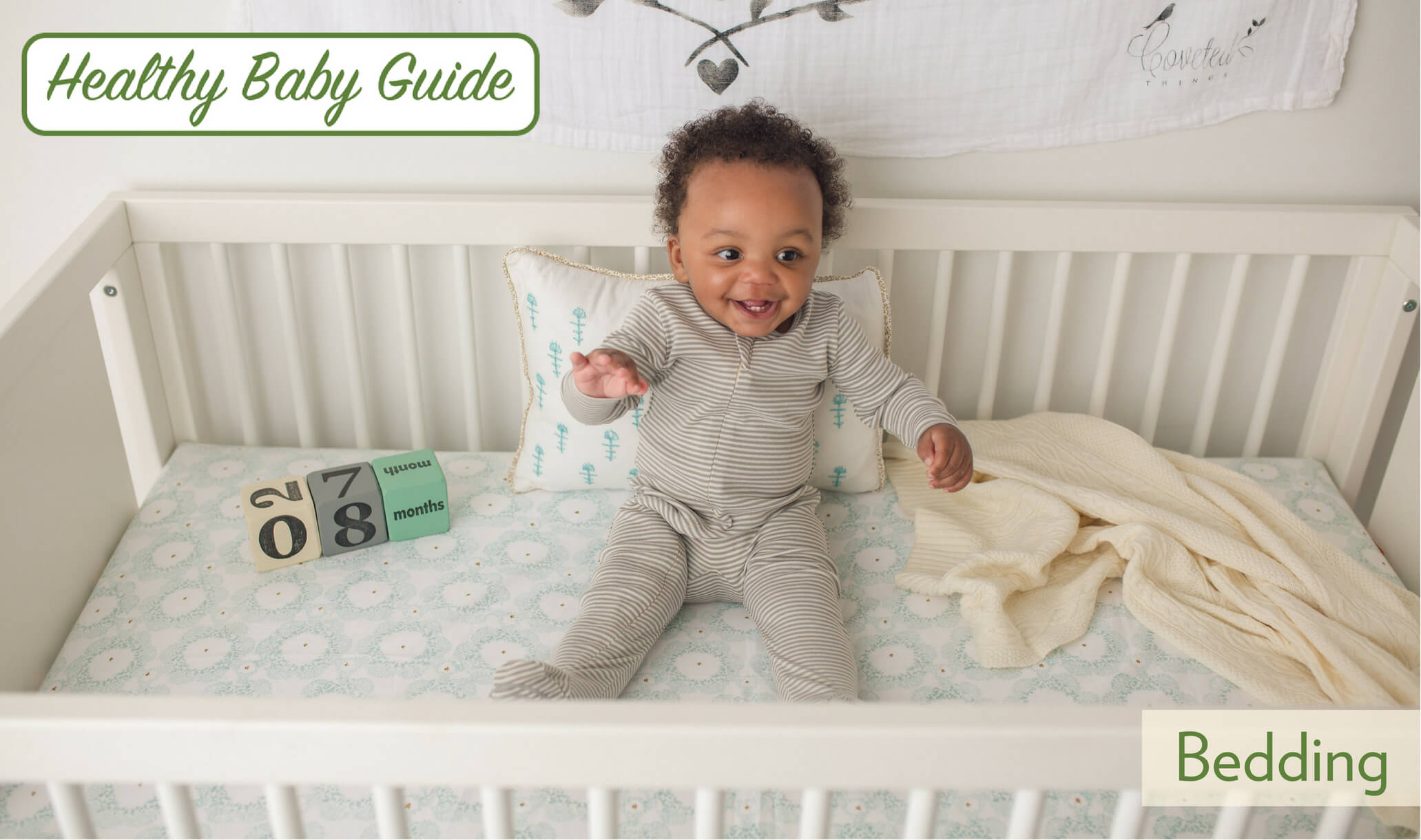Healthy Baby Guide to Bedding
Babies spend up to 16 hours a day in their cribs, so your baby’s crib should be a cozy, comforting place for him or her to rest. Our Bedding Healthy Baby Guide is here to help you make the best choices for your whole family. By using bedding made of soft organic cotton and non-toxic dyes, you can rest assured that you are keeping harsh chemicals from constant contact with baby’s sensitive skin.
What you should know:
With the excessive chemicals used in production of conventional cotton, chemicals can end up in the cotton and can be absorbed into the baby’s skin as the baby lays against it.1 Other chemicals such as flame retardants and toxic dyes can also be used in the fabric’s finishing. Using bedding made of organic cotton with non-toxic dyes can keep these chemicals from constant contact with your baby’s skin.
Cotton production:
- The EPA rates 7 of the top 15 pesticides used on conventional cotton as potential or known carcinogens.
- A drop of the pesticide aldicarb absorbed through the skin can kill an adult, yet aldicarb is commonly used in cotton production.2
Fabric finishing:
- Bedding can also be manufactured with a variety of other chemicals including flame-retardants, wrinkle resisters, stain repellants, colorfastness treatments, and chemical dyes. Even formaldehyde and PVC are used as fabric finishers.3
- AZO dyes, used for making bright colors, are toxic and are banned in textiles in the EU but not in the U.S.
- Most wrinkle-free or no need-to-iron fabrics are made so by using formaldehyde. 4
Resources
- http://www.organicauthority.com/
- http://www.ejfoundation.org/
- Greene, Dr Alan, Raising Baby Green. pg. 118.
- Barnett, Sloan, Green Goes with Everything, pg. 127
RELATED ARTICLES:
What is Glyphosate?
How to Choose a Crib Mattress
Read All Our Healthy Baby Guides.


